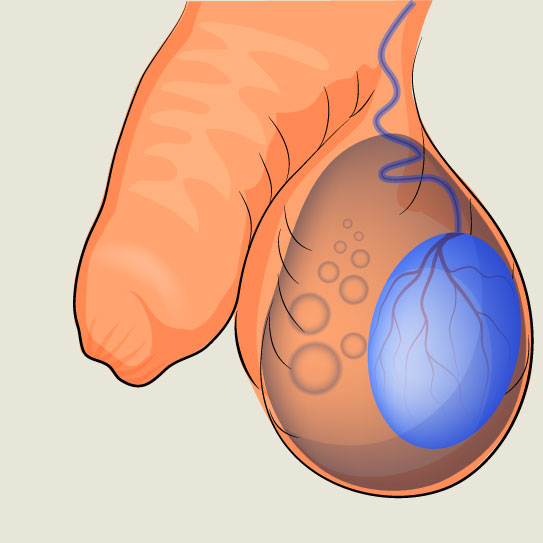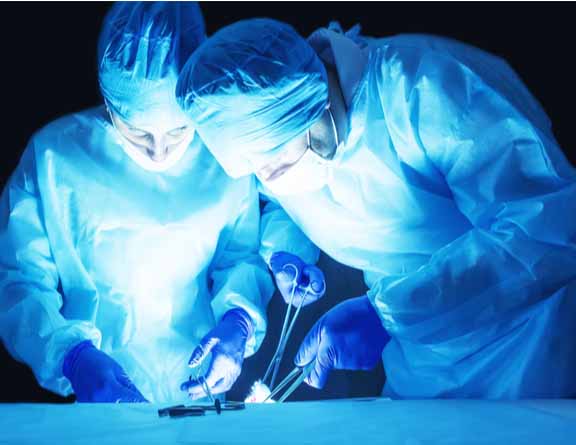Get the most advanced hydrocele treatment in Varanasi at Pristyn Care
A hydrocele is a condition that causes problems around the testicles. It occurs when the scrotum is filled with watery fluid and leads to the swelling. Though the condition is not painful, the patient may experience discomfort. Moreover, hydroceles are found to be common in newborn male infants but can also occur later in life at any age. If you are suffering from hydrocele or your kid is, make an appointment with the best doctor for hydrocele in Varanasi.
It should also be kept in mind that, if a kid develops this problem, it is also an indication of hernia. Before it complicates, avail the best treatment of hydrocele in Varanasi.
For adults who have hydrocele or swelling near the scrotum, it could be a result of groin related injury. There are cases where inflammation in the testicles can also be the cause. It is known that hydroceles go away on their own. But, in some cases, it can persist for a longer duration. In kids, it may persist up to a year but go away eventually. Though leaving it untreated is not a safe option. You need to get the treatment of hydrocele in Varanasi as soon as possible. For a precise diagnosis and best hydrocele cure, you can get in touch with an expert hydrocele doctor at Pristyn Care in Varanasi.
Different Types of Hydrocele
Hydrocele is divided into the following types:
- Primary Hydrocele- In this type, the swelling is soft and nontender. It can grow very large in size as they are often asymptomatic. However, if left unattended, it may cause atrophy of the testis due to compression or obstruction of the blood supply.
- Secondary Hydrocele- The hydrocele that occurs due to a testicular disease is called secondary hydrocele. The cause can be cancer, hernia, orchitis, or any other kind of trauma. Secondary hydrocele is most commonly associated with acute or chronic epididymo-orchitis. It often goes away when the primary lesion is treated.
- Infantile hydrocele- This type of hydrocele has the tunica and processus vaginalis distended to the inguinal ring, but there is no direct connection of the hydrocele with the peritoneal cavity. It can occur in infants as well as adults.
- Congenital Hydrocele- It is a type of hydrocele that connects with the general peritoneal cavity. Though the communication is very small, there is still a possibility that the fluid may drain into the peritoneal cavity.
- Encysted hydrocele- In this type of hydrocele, there is a smooth oval swelling very close to the spermatic cord. Due to the swelling, many patients mistake it for inguinal hernia. It is also called spermatic cord hydrocele and has no communication with the peritoneal cavity.
- Funicular hydrocele- In funicular hydrocele, the sac has a direct communication with the peritoneum connecting it with the internal inguinal ring. However, no connection exists between the sac and tunica vaginalis. It can grow very large in size due to straining.
During initial diagnosis, the doctor will identify which type of hydrocele you have and narrow down the complications associated with the procedure. Then the doctor will start the treatment right away.
Foods to Avoid with Hydrocele
Many people don’t know this, but the foods you eat on a regular basis can either improve the hydrocele symptoms or make them worse. Therefore, you should avoid the following foods to manage hydrocele symptoms:
- Processed Items- These foods contain excess salt and sugar and have fiber content.
- Preserved Foods- These foods are not good to eat because they have artificial preservatives and other chemicals.
- Junk Foods- It includes food items like pizza, burger, fries, etc. that are low in nutritional value. They can cause indigestion and hinder the bowel movements as well.
- Spicy and Heavy Foods- Minimize the spice intake as well if you have hydrocele. Excessive spices can upset the stomach and cause a lot of discomfort during bowel movements.
- Pickles and Caffeine- These food products are also not good for the body and should be strictly avoided.
All these food items have a direct impact on the digestion process and the individual has a hard time passing stools. This will put strain on the groin region and worsen the hydrocele symptoms.
Post Hydrocelectomy Care Plan
After you’ve had hydrocelectomy, the doctor will give you a detailed recovery plan to ensure that the wound heals quickly and you will be able to perform all activities without any difficulty. The most common tips that are included in the post-surgery care plan are given below:
- Take complete bed rest immediately after the surgery for at least 1 day.
- Allow your body to heal at its own pace. Do not push yourself to perform an activity even if it hurts.
- Start taking small walks once you feel like you can.
- Make sure that you don’t indulge into strenuous exercises that can strain or put pressure on the stitches.
- Refrain yourself from lifting heavy weights for at least 2-4 weeks until you recover completely.
- Post-surgery, you can eat your normal diet but make sure to stay away from oily, greasy, spicy, and processed food items as they can cause constipation and also slow down the healing process.
- Incorporate fiber-rich foods in your diet and drink plenty of water to stay hydrated.
- Pay special attention to the hygiene of the scrotal region and keep it clean and dry. Wash the wound with warm water and mild soap, then pat it dry.
- In the first 2 days, the doctor will ask you to avoid bathing. So, do not take a shower until the doctor gives you permission.
- Do not take baths in hot tubs and avoid swimming as well until the wound heals completely.
- Wear scrotal support or jockstrap for at least 1-2 weeks after hydrocele surgery. It will minimize the pressure in the scrotal region and allow you to perform regular activities without pain or discomfort.
- Avoid wearing tight clothes around the waist and groin area as they can irritate the scrotal region.
- Refrain from sexual activities as well until the doctor says it’s fine.
When you follow the doctor’s instructions properly, it becomes a lot easier to resume the daily activities and get back to the regular life after hydrocelectomy.
Prevention of Hydrocele
There is no assured way to prevent hydrocele in a baby. However, in adults, hydrocele usually occurs due to some infection, inflammation, or injury that can be avoided. Here are some preventative tips that will help:
- Proper prenatal care
- Try to avoid being injured, follow the safety & protection rules like wearing athletic cups or support while playing sports.
- Practice safe sex to reduce the chances of contracting sexually transmitted infections (STIs).
- Avoid pressure activities like horse riding that can put pressure on the scrotum.
- Treat cough properly as recurrent and chronic cough creates intra abdominal pressure and puts strain on the scrotum.
- Address constipation as soon as possible.
- Appropriate care should be taken to prevent hernia and if you already have it, get proper treatment to reduce the chances of hydrocele development.
In rare cases, hydrocele may also develop due to hereditary issues, such as a side effect of Ehlers-Danlos Syndrome. Therefore, it is also important that you keep a watch on your health and take the necessary measures to prevent hydrocele.








.svg)









